BMW X1 review: really quite average – the electric version even more so
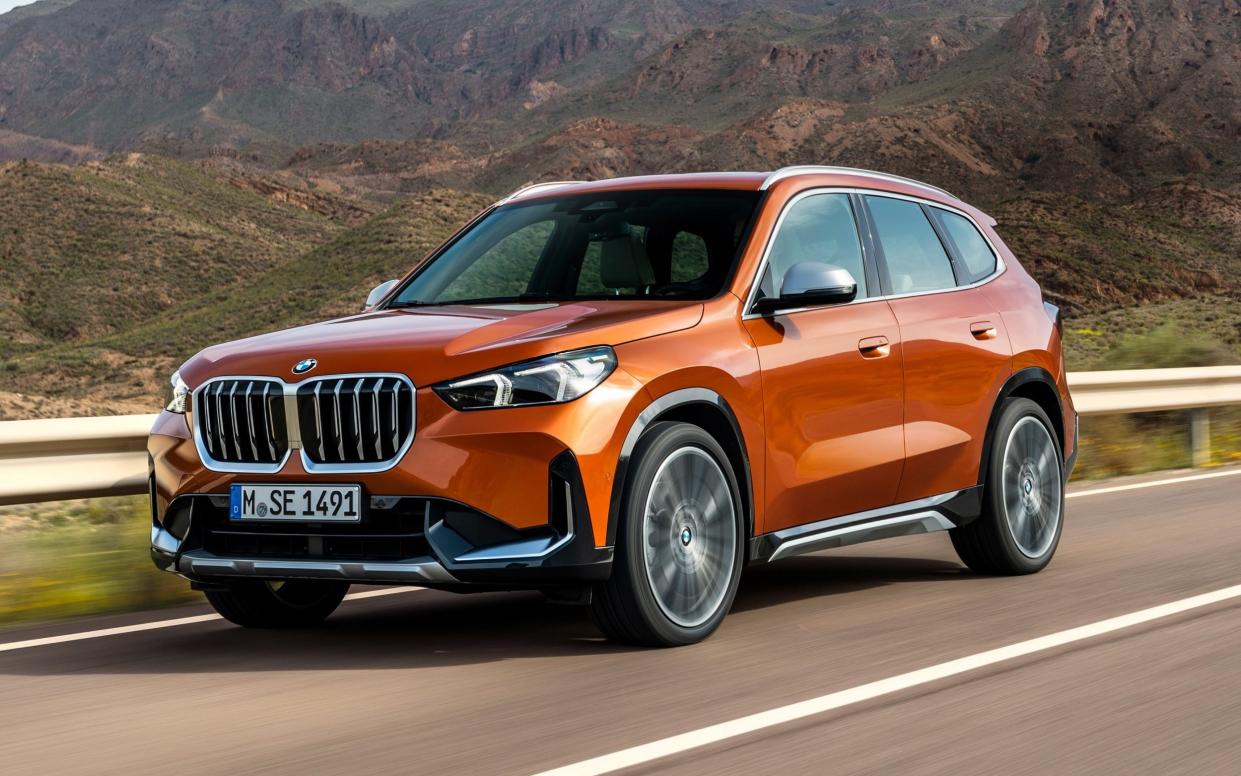
Well, they got that the wrong way around: after the sublime near-perfection of the facelifted 3-series, BMW pushed us into the X1 family SUV, the suburban ideal of a rock’n’roll lifestyle with the all-important blue and white “propellor” badge on the front.
With BMW’s starter SUV now in its third generation, the competition in this somewhat unlovable sector is fierce and growing, whether that’s from existing makers with models such as the Mercedes-Benz GLA, Range Rover Evoque or Volvo XC40, non-premium models such as Kia’s Sportage or Nissan’s best-selling Qashqai, or new manufacturers such as BYD of China.
While the first X1 was undistinguished, heavy, cramped, poor to drive and not desperately well built, the second generation was a better proposition. The big news for this third-generation X1 is that there is an all-electric drivetrain for the first time as well as an entirely updated set of engines (one petrol and two diesels from launch), with a a couple of plug-in hybrids arriving later along with the battery-electric model called iX1 xDrive30.
Prices start at £36,225 for the base model 148bhp/265lb ft front-drive 18d to £52,255 for the iX1 EV.
What’s in a name?
Unlike Volkswagen, which has looked set to ditch its traditional best-selling model names such as Golf (or Ford for that matter, which looks set to announce it’s dropping the Fiesta name), BMW has started to merge its regular line-up with its ‘i’ electric car line-up. Unlike some rivals, BMW wants a multi-drivetrain choice in its existing range rather than a distinct EV range.
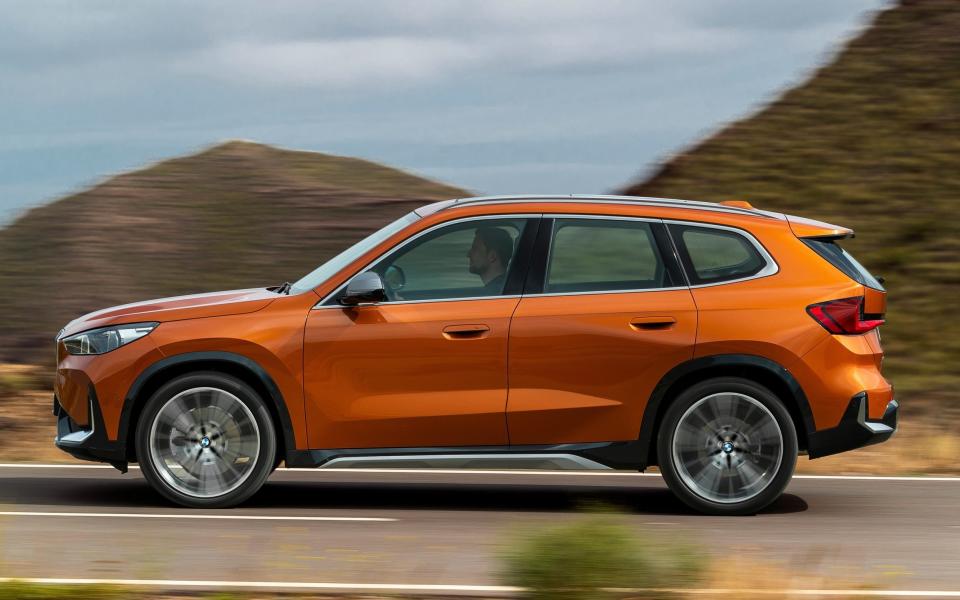
This, of course, brings a series of problems. Using the same chassis-floorpan for combustion, plug-in hybrid and battery-electric drivetrains means that while the initial tooling costs are reduced and much-loved badge names retained, the result is compromised and the efficiency-hungry battery version might suffer as a result.
It also means that some of the styling advantages of a battery car aren’t available, such as fitting the heating, ventilation and air-conditioning unit (HVAC) under the bonnet to free interior space. Being a BMW, of course, cocooning interiors and wrap-around facias are part and parcel of the appeal, although the pressure then falls on designers to reduce the racket from windscreen wiper motors, heater blowers and so on, because they can be intrusive in the quiet interior of a battery car.
Interior appointments
Inside there’s the usual multi-surface but deeply conservative BMW facia. Name an interior material and you’ll find it here: soft-touch plastics, vinyl, shiny aluminium, fretwork designs and piano black lacquer. It’s all tastefully done yet a bit too much in places, especially the endless surface changes which are a bit show-off, while the virtuosity in material usage declines markedly on the lower panels.
The important things are there, though: comfortable seats; plenty of room; and relatively easy adjustment, with rear-seat fore-and-aft adjustment and lots of head and leg room. The rear seat backs fold on to their bases leaving an almost flat load bed.

There’s room under the boot floor for bits and bobs (and the charge cables on the battery version), but despite BMW’s fancy new algorithm-based design software, the parcel shelf over the load bed is probably the worst-designed thing on the car, being made of recycled cat hair and too big and unwieldy to fit under the boot floor. Needless to say, the rear window doesn’t open separately of the tailgate in the brilliant manner of the 3-series.
So, forget BMW’s brilliant capstan control of the touchscreen, you need to use your fingers on the touchscreen, which adds distraction. This is the eighth-generation operating system and if you discount the dubious benefit of a slightly curved screens, for the most part it’s logical to use, although it needs learning and the instrument panel graphics are wildly overdone to the extent that it wouldn’t be in the least bit surprising to see a series of circus elephants marching across the screens.
Another source of confusion is that there are several ways into some functions. The steering wheel-mounted buttons are as good (or bad, depending on your view) as any other and far too easy to activate by accident.
On the road
Try and leave the petrol engine alone. Despite the additional urge from the 11kWh lithium-ion battery under the passenger seat feeding a 48-volt 19bhp motor in the gearbox bellhousing, it’s still noisy and agricultural. Nor does it live up to its 215bhp/266lb ft billing. Sure, the 145mph top speed and 7.1sec 0-62mph posits something exciting, but you have to wring it out like a dishcloth to get it to shift.
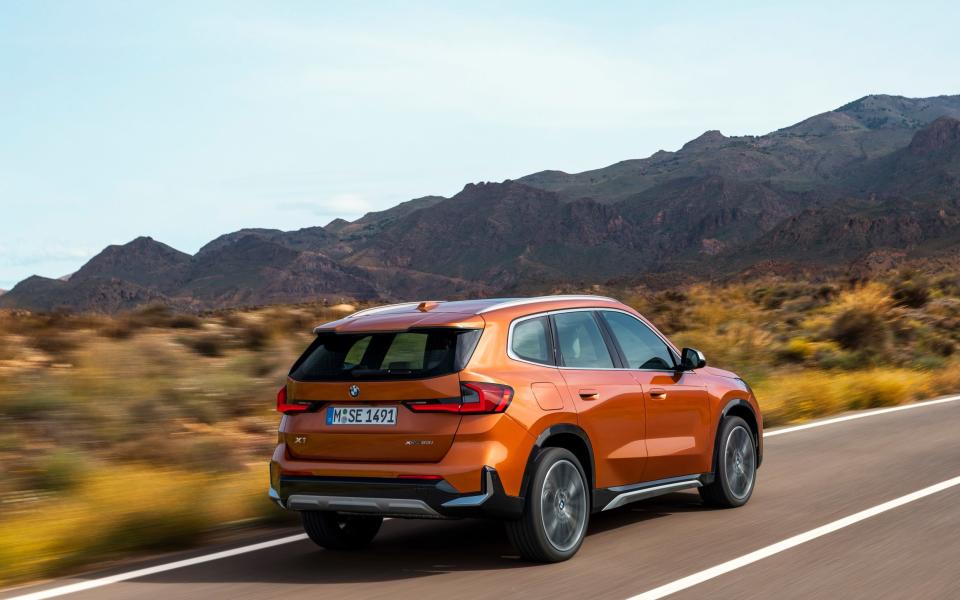
The single twin-clutch seven-speed gearbox is nicely worked, with a smart response to the steering-wheel paddles and the accelerator kickdown. Only at low speeds does it hover between shifts occasionally and make abrupt and jerky changes.
The other combustion engine I tried was the 18d 2.0-litre turbodiesel, which is much better, partly because it produces its best work at much lower engine speeds, which keeps the racket at bay. The indicated consumption of 52mpg on test was welcome, although I thought the larger-capacity diesel 23d with 208bhp/295lb ft (which starts at £43,235) seems like a better proposition with little on-paper penalty at the pumps.
After the excellent 3-series saloon and estate, the ride quality of all the combustion X1s falls notably short. All the test cars had the 19-inch wheels and tyres of the optional M-Sport package, which coped with the few bumps and potholes of the immaculately surfaced Bavarian Alp roads, but added a fizz to the low-speed ride which could be felt through the major controls.
It’s height which proves the X1’s Achilles Heel. Turn into a corner and the body tips onto the outside before the MacPherson strut front/multi-link independent rear suspension tries to limit the roll, which in turns forces your body against the seat bolsters. All high-mounted SUVs do this, but BMW’s chassis expertise hasn’t found a workaround.
The steering lacks the intuitive progression of the company’s more conventional models although it feels accurate and pretty positive through a series of bends, without much feedback to the wheel rim.
The all-disc braking is terrific, with a progressive-feeling pedal and decent amounts of grab at the top of the travel.
The electric version: first the good
This was a guided journey in convoy with a BMW test driver, and we weren’t even given a full data sheet for the vehicle so these limited observations should be judged accordingly.
What we can tell you is that this battery version, which is on sale now for delivery in January, weighs 2,085kg including a 75kg driver. That is 435kg more than the X1 18d turbodiesel version.
The battery is a 64.7kWh lithium-ion battery with the latest version of BMW’s self-exciting (read no magnets or rare-earth materials) AC electric motors (one front, one rear) delivering 268bhp (or 308bhp with the 10-second Boost engaged) and 364lb ft of torque.
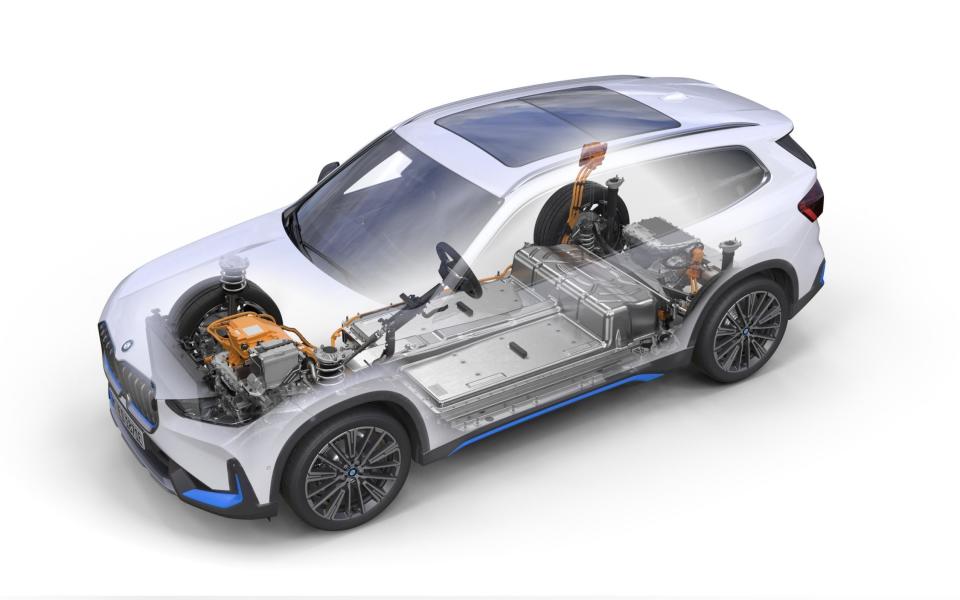
That gives a top speed of 112mph, 0-62mph in 5.6sec, with a WLTP Combined range of 257 miles and an efficiency of 5.8 miles per kWh.
Charging is via a standard 11kW AC on-board charger, but there’s an optional 22kW AC charger which will brim the battery in 3.45 hours – although 22kW chargers are rare in the UK.
The iX1 will fast charge at a DC station at up to 130kW, which gives a 0-80 per cent charge in 30mins. It also recuperates electricity at a maximum rate of 140kW which is worth noting if you live on top of a mountain.
Initial impressions are that despite its extra weight, the battery car moves off with a light-footed feeling, more so than in a typical electric vehicle, which produces all its torque from almost zero motor revolutions.
It is brisk and gathers mid-range speed quickly with a thrust which pushes you back in the seat, but not crazily so. It means your stomach stays in place even under hard acceleration, during which the software is discernibly shuffling torque around the wheels with the most grip. The accelerator feels progressive and the car doesn’t pull the steering around under hard acceleration, even with Boost engaged.
In addition, the braking progression is an exemplar of its type, seamlessly combining friction and regenerative braking all the way to a complete halt.
Then the bad…
That’s the good news, the bad is that on 20-inch Continental Ecocontact tyres the iX1 has all the grip of a dance slipper on a polished ballroom floor. Anything even approaching enthusiastic cornering results in the tyres squealing in protest and while the braking progression is great, the limited grip means that stopping in a short distance is a theatrical event with wheels locking as the bodyshell dips and corkscrews.
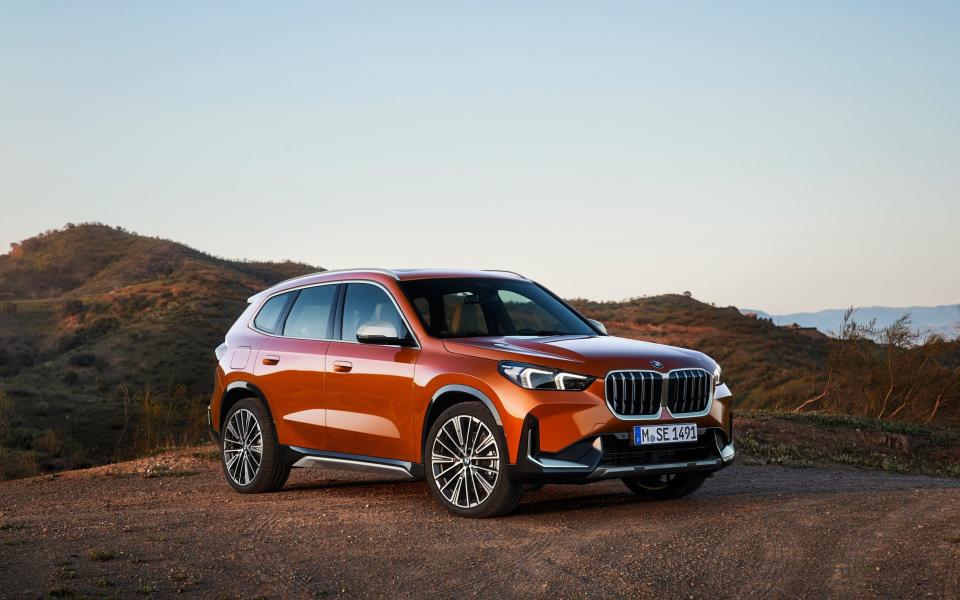
I wasn’t desperately impressed with the steering, either, which has an empty, over-centre response as you turn the wheel and virtually no feedback to the rim; it’s really difficult to figure out what this car is going to do when you turn into a corner.
As far as the configurability of the accelerator pedal to adjust the lift-off braking effect is concerned, there are several ways into it through the software, with four levels of regenerative braking, as well as a B for Brake setting on the drive selector. There’s also an Active system which determines the lift-off-accelerator behaviour according to gradient, the satnav determination of what’s around the corner and the surrounding vehicles.
That last setting is neither predictable, consistent or pleasant and probably best avoided. With maximum regenerative braking dialled in, the iX1 will provide what is known as one-pedal driving. I don’t approve as it encourages lazy driving habits, but some folk like it. There are no steering column paddles to increase the regenerative braking, just a left-hand one to activate the Boost effect.
While the interior is generally refined and quiet, that means the tyres are noisy, hissing and swishing their way inside and there’s a kind of Dutch auction of competing noises as you turn on the wipers, activate the heater blower and so on.
We weren’t given the amount of boot space sacrificed to allow the fitment of the battery and the rear-motor electronics, but they looked to occupy all of the under-floor area.
The Telegraph verdict
The X1 and iX1 are far from exemplars of BMW’s talents and after the generally well received generation-two cars, it seems as though this third iteration has taken, if not an about face, at least a course alteration (although the use of the same platform/chassis for all the drivetrains including battery electric is interesting).
Family SUVs are an undistinguished if popular market category and it’s difficult to see why folk are so wedded to the idea of these vehicles at all, let alone premium models.
If you must have one, there are more than adequate non-premium models in this segment and Mercedes-Benz, Volvo and Audi will be more than happy to take your PCP finance if you must have a posh badge.
In that respect it’s difficult to muster many reasons to buy this really quite average BMW (particularly the electric version) over say a Kia Sportage or Niro, a Volvo XC40 or even a new Subaru Outback which is a genuinely different and reputedly reliable off-road estate at £36,000.
The facts
On test: BMW X1 S-Drive 18d
Body style: five-door family SUV
On sale: now
How much? range from £36,225 to £52,255 (for battery electric iX1) As tested £36,225
How fast? 131mph, 0-62mph in 8.9sec
How economical? 37.2mpg (WLTP Combined), as tested 52.3mpg
Engine & gearbox: 2.0-litre four-cylinder turbodiesel, seven-speed twin clutch semi-automatic gearbox, front-wheel drive
Electric powertrain: mild hybrid system
Maximum power/torque: 148bhp @ 3,750rpm/265lb ft @ 1,500rpm
CO2 emissions: from 129g/km (WLTP Combined)
VED: £190 first year, then £165
Warranty: 3 years
Spare wheel as standard: no
The rivals
Kia Sportage 2 1.6 GDi manual
from £27,250
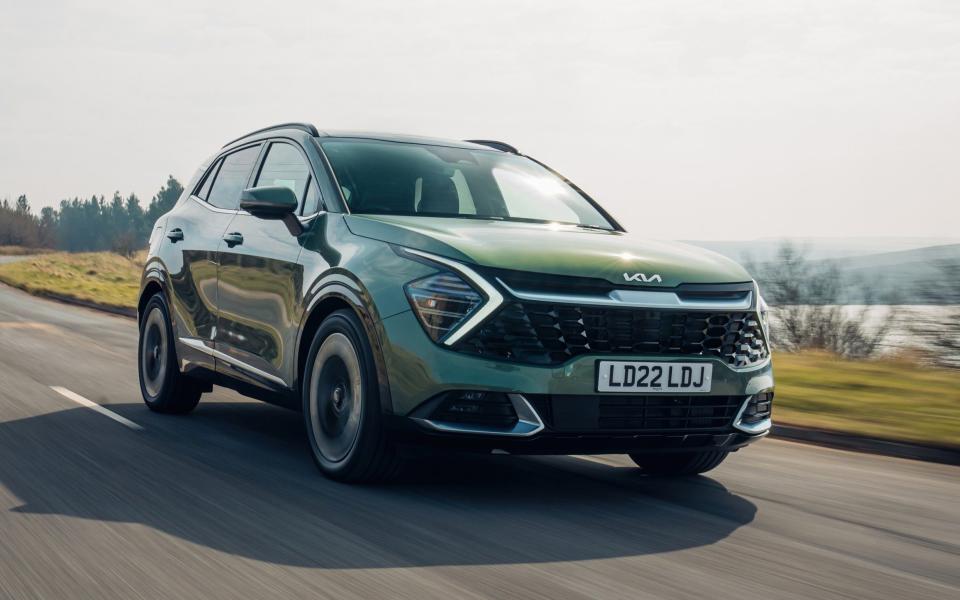
Well received family SUV now in its fifth generation and sharing its platform and mechanicals with sister company Hyundai’s Tucson. Drives well and the new styling won’t frighten the horses. The drivetrain choice includes mild, full and plug-in hybrids as well as conventional petrol and diesel. “Innocuous and inoffensive,” is how colleague Alex Robbins summed it up, though it’s not cheap.
Audi Q3 S Line 35 TDI S tronic
from £35,510

The Audi take on an SUV sitting on VW’s MQB platform also used in the Skoda Kodiaq and Seat Ateca. Audi’s skills in cabin design and quality shines out here and the chassis provides a good ride quality and excellent dynamics if you choose to press on. Yet despite an improved (simplified) touchscreen interface, the set-up still provides a compelling reason not to buy.
Volvo XC40
from £34,405

Former Car of the Year and perhaps the least threatening looking car in the class, Volvo has genuinely tried to give its family SUV a different vibe. It suffers the same high mounted, extra weight and drag of the class, is expensive and the accommodation and load space are far from the top of the class, but a different choice in this ubiquitous market.
For new and used buying guides, tips and expert advice, visit our Car Advice section, or sign up to the Telegraph Cars newsletter here and to join the Telegraph Motoring Club Facebook group click here

 Yahoo Movies
Yahoo Movies 
